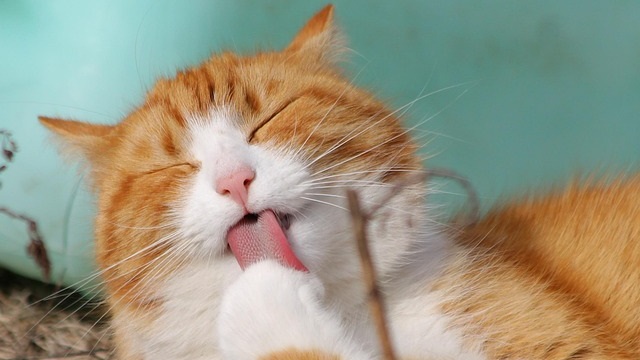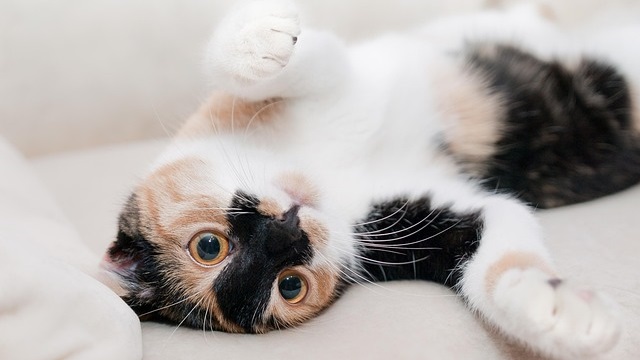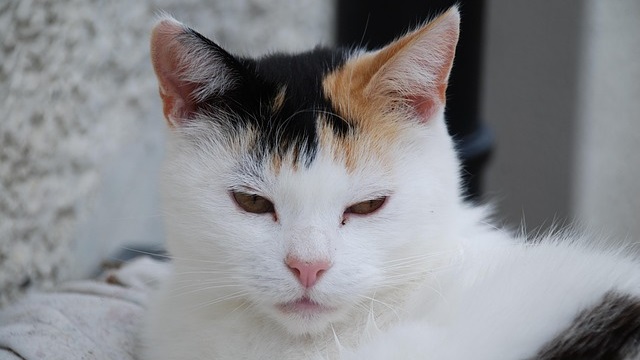If you’ve been asking, “why is my cat scratching so much?” or noticed bald spots, excessive licking, or constant grooming, you’re not alone. Cat overgrooming and scratching are often subtle signs that something isn’t right. While the behavior might seem harmless at first, it can point to underlying health issues — especially if paired with hair loss or skin irritation. One of the most overlooked causes? Cat anxiety.
According to Dr. Carolina Domingues, DVM at Maven Pet:
“The best preventive thing you can do for your cat is to know what’s normal. This way you’ll understand quickly whenever something is off.”
In this guide, we’ll explore nine potential causes of excessive grooming and scratching, how to recognize cat stress symptoms, and how Maven Pet helps detect and monitor these changes early.
1. Environmental Allergies
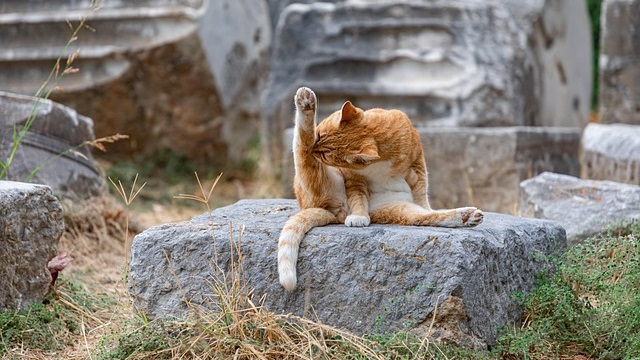
Just like humans, cats can be sensitive to pollen, dust, or mold. These allergens can cause irritated skin, leading to overgrooming, licking, and scratching.
When to worry: If symptoms persist year-round or worsen seasonally.
What to do: Try environmental enrichment (clean air filters, wipe down paws), and ask your vet about allergy testing or a diet trial.
Maven Tip: Use Maven’s journal feature to track when symptoms flare. This helps your vet identify potential allergens.
2. Fleas and Parasites
The base of the tail is a common hot spot for flea allergy dermatitis. Even indoor cats can get fleas or insect bites.
When to worry: If your cat is licking or biting around the tail, or if you notice small scabs (flea dirt).
What to do: Run a flea comb through your cat’s coat. Consult your vet for treatment and prevention options.Sometimes treating the pet isn’t enough! You also need to clean the environment, especially to eliminate parasite eggs! Vacuum the house and wash the pet’s bed or favorite cushion/blanket, ideally at over 140°F (60°C).
Maven Tip: Sudden increases in activity or restlessness may point to discomfort. Maven can track these shifts.
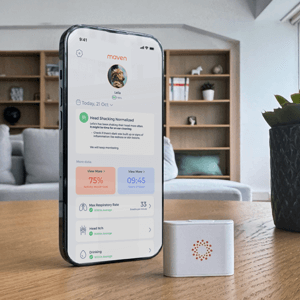
Maven Pet
Health Monitor
#1 Vet-recommended pet monitor! Tracks activity, rest, respiratory rate, water intake, scratching and other health indicators 24/7
3. Food Allergies
Some cats develop food allergies to common proteins like chicken or salmon, which can lead to excessive licking and itchy skin.
When to worry: If symptoms continue despite environmental management.
What to do: Your vet may recommend a diet trial with a novel or hydrolyzed protein food.
Maven Tip: Log dietary changes and behavioral improvements in the Maven app for a clearer view of progress.
4. Stress and Cat Anxiety
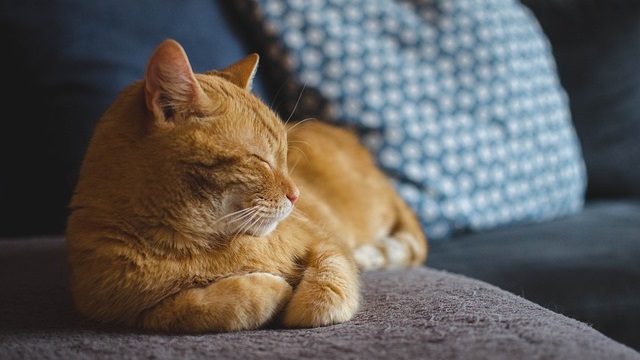
Cats are highly sensitive to changes in their environment. Moving homes, new family members, or lack of stimulation can trigger cat anxiety, leading to cat overgrooming, hiding, or aggression.
When to worry: If grooming becomes compulsive or occurs in specific areas like the belly or thighs.
What to do: Create safe spaces, use scratching posts, and consider calming aids or anti anxiety medication under vet guidance.
Maven Tip: Maven tracks nighttime restlessness and behavior changes, offering early clues of an anxious cat.
Read more in Cheeto’s case study — where Maven data helped identify stress as the root cause of overgrooming.
5. Skin Infections
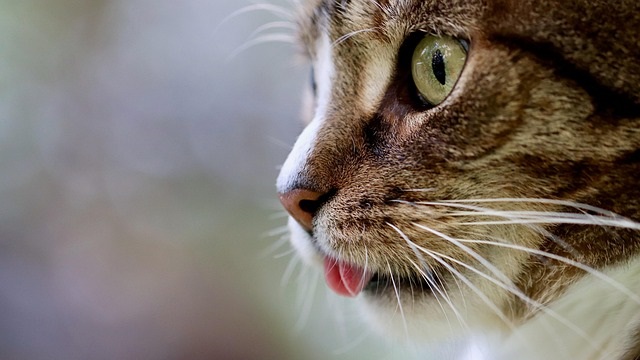
Bacterial or yeast infections can develop from constant licking or an untreated wound, exacerbating irritation.
When to worry: Signs include redness, swelling, or a foul smell.
What to do: Your vet might perform skin scrapings or prescribe topical or oral medications.
Maven Tip: Monitor resting patterns and symptom journaling through Maven to support your vet’s diagnosis.
6. Pain or Discomfort
Sometimes, cats groom excessively around a joint or limb due to pain — not itchiness. This is especially common in older cats.
When to worry: If the licking is focused and persistent.
What to do: Schedule a physical examination to rule out arthritis or injury.
Maven Tip: Maven detects decreases in mobility and sleep interruptions, both common signs of discomfort.
7. Hormonal Imbalances
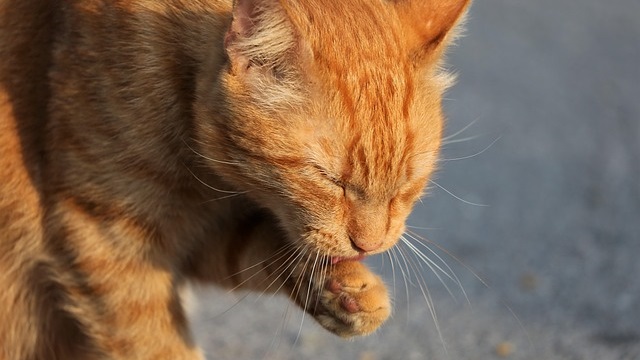
Thyroid issues or other endocrine problems may manifest as excessive thirst, activity changes, and grooming.
When to worry: Combined signs like weight loss or agitation.
What to do: Bloodwork and follow-up with your vet are needed.
Maven Tip: Use Maven to track shifts in baseline behavior that may signal metabolic concerns.
8. Boredom and Lack of Enrichment
Without mental stimulation, cats often develop compulsive behaviors like licking, pacing, or scratching.
When to worry: If your cat is home alone often or doesn’t engage with toys.
What to do: Introduce puzzle toys, perch space, and interactive play.
Maven Tip: Log activity data and resting trends with Maven to see if your cat is under-stimulated.
9. Contact Dermatitis
Chemicals in cleaning products or even certain fabrics can cause irritation, leading to scratching or grooming.
When to worry: If symptoms worsen after exposure to a new object or surface.
What to do: Remove potential irritants and consult your vet if symptoms continue.
Maven Tip: Use Maven’s health journal to note any environmental changes and link them to new symptoms.
Key Takeaways: Cat Anxiety, Overgrooming & When to Take Action
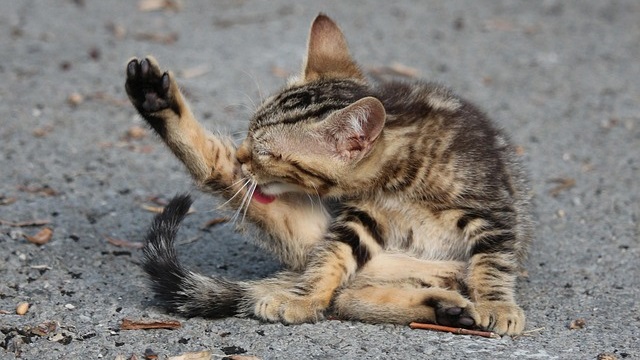
- Cat overgrooming and excessive scratching can signal medical or behavioral concerns
- Common causes include cat anxiety, parasites, allergies, boredom, infections, or pain
- Watch for cat stress symptoms like excessive licking, hiding, hair loss, or changes in appetite or activity
- Know when to call the vet: visible skin damage, open wounds, or grooming that disrupts daily routines
- Maven Pet helps detect subtle changes like increased restlessness or activity drops — supporting early intervention
By knowing what’s normal and tracking changes, you’re better prepared to act quickly and keep your cat healthy long term.
Ready to track what matters? Learn how Maven turns any collar into a pet smart collar that monitorz your cat’s health — so small symptoms don’t become big problems.
Maven Pet focuses on improving the quality of life of our pets with technology, using artificial intelligence (AI) to enable proactive pet care. By accurately collecting and monitoring pet data 24/7 and flagging any irregularities, Maven Pet empowers pet parents and veterinarians to stay ahead of potential health issues, ensuring the well-being and longevity of our beloved companions.

